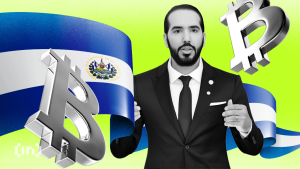How to transfer $1 billion for basically free: Bitcoin whale watching

Billionaires, take note. It’s one million times cheaper to send huge sums of money on the Bitcoin (BTC) blockchain.
A Bitcoin user sent over 50,562 BTC ($1 billion) to an address on the blockchain, paying a fee of just 2,513 Satoshis (the smallest denomination of a Bitcoin), equivalent to half a dollar for the pleasure.
The unknown wallet address paid a tiny fraction (less than 0.0001%) of the total value transacted. Put simply, the user paid 50 cents to move double the GDP of the Bitcoin-friendly islands of Tonga. The billion-dollar transaction was processed in block 761374, at a transaction fee of just 15 satoshis (sats) per unit of data or sats/vByte.
Cointelegraph experimented with various online banking services to estimate the cost of sending vast sums of money through legacy finance tools. For the transfer of $10 million, a well-known remittance provider charges a tiny fraction, 0.3%, which equates to $30,000. That’s one million times more expensive than using the Bitcoin blockchain to send money.

Before a new Bitcoin block is mined, every Bitcoin transaction request sits in the memory pool, or “mem pool”, which is kind of like a Bitcoin bus stop. On average, miners take 10 minutes to mine a new block.
Bitcoin miners sort through transactions, processing the passengers that have the most expensive bus tickets (transaction fees) first. Typically, the higher the transaction fee, the faster the transaction is confirmed. At 15 sats/vByte, the cost of sending over 50,000 Bitcoin is very low, indicating that this Bitcoin whale was not in a hurry.
By way of comparison, in late October, a fat-fingered Bitcoin user paid a whopping 8,042 sat/Byte, or 1,136,000 sats to move 3.8 Bitcoin ($65,000).
The process of sorting through transactions in the mempool is relatively straightforward for miners. Contrary to many Bitcoin critics’ beliefs, it is not an energy-hungry process. Ultimately, Bitcoin’s energy consumption comes from block reward issuance, not transactions.
Related: BTC miner CleanSpark scoops up thousands of miners amid ‘distressed markets’
The Bitcoin whale address continued to send over 50,000 Bitcoin to various other addresses on the blockchain. The addresses are not publicly known addresses, such as Binance’s cold storage wallet or the Bitcoin mined in 2009, which was subsequently lost in a landfill in Wales.













